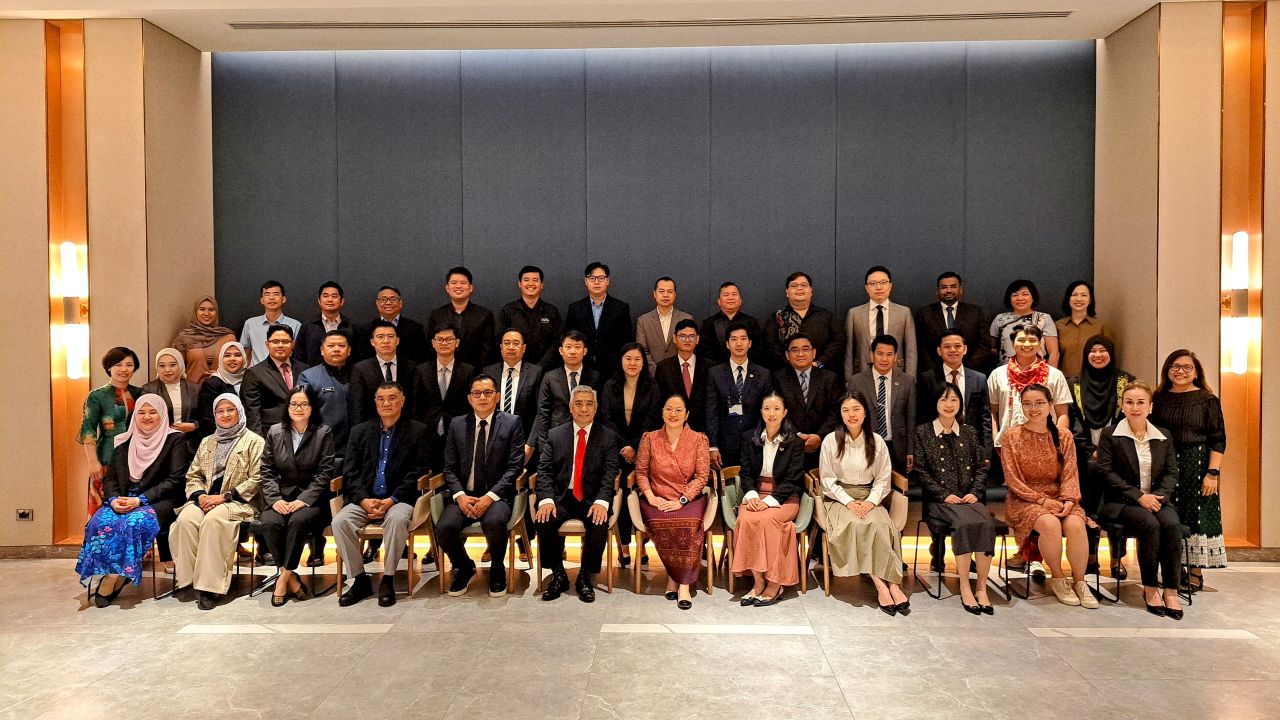Honing Project Management Skills to Achieve Development Goals

Photo shows the participants of this year's regional training program together with the training team. Photo credit: ADB.
Thirty-nine government officials and specialists joined this year’s Regional Training in Project Management organized by the Asian Development Bank (ADB) in Bangkok from 5 to 9 May. The training program is designed to support the Brunei Darussalam–Indonesia–Malaysia–Philippines East ASEAN Growth Area (BIMP-EAGA), Indonesia–Malaysia–Thailand Growth Triangle (IMT-GT), and the Greater Mekong Subregion (GMS) in project planning and implementation. It fosters a results-based project management approach that aligns projects to sector strategies.
“The formulation and execution of effective development projects require robust institutional capacity and sound governance frameworks,” said Alfredo Perdiguero, who heads Regional Cooperation and Integration at ADB’s Southeast Asia Department. “ADB remains steadfast in its commitment to support executing and implementing agencies in strengthening their capabilities across all stages of the project cycle—from planning and design to financing and implementation.”
BIMP-EAGA, IMT-GT, and GMS have project management and results-based monitoring and evaluation systems in place as part of their institutional enhancements. However, the subregions still need to improve capacity to ensure the effectiveness of projects and maximize their impact. The governments and subregional secretariats requested ADB to conduct a training program on project design concepts and tools.
For BIMP-EAGA, the regional training complements efforts to expedite work on remaining projects according to the BIMP-EAGA Vision (BEV) 2025 timeline and plan for a new pipeline of projects. The subregion is in the final year of implementation of its 8-year strategy, which anchored development initiatives on greater resilience, inclusiveness, and sustainability. BEV 2025 has a rolling pipeline of 214 priority infrastructure projects, valued at US$66.19 billion. BIMP-EAGA is currently preparing a new strategy for the next decade, BEV 2035, which includes expanding the role of economic corridors in developing the subregion.
In the meantime, GMS has started implementing its Regional Investment Framework (RIF) 2025–2027, which has 176 projects requiring $26.4 billion in financing from development partners, the private sector, and domestic resources. IMT-GT has 36 priority connectivity projects valued at $57 billion under its Implementation Blueprint 2022–2026.
The annual regional training program is intended for mid-career officials or specialists and their equivalent from ministries or departments involved in subregional projects. It is implemented under ADB’s BIMP-EAGA, IMT-GT and GMS Capacity Building Program (B-I-G Program).
“Your role in crafting well-conceived and strategically aligned project concepts is vital to mobilizing the financing needed and ensuring that investments are both impactful and sustainable,” said Pamela Asis-Layugan, regional cooperation specialist at ADB’s Southeast Asia Department, who led the training program.
A combination of learning methods was used, including lectures, role-playing, simulations, case studies, and problem-solving exercises. Participants were organized by project teams and mentored in developing project concept proposals and preparing implementation plans.
This was first posted on the BIMP-EAGA website.
Last Updated: 14 May 2025
